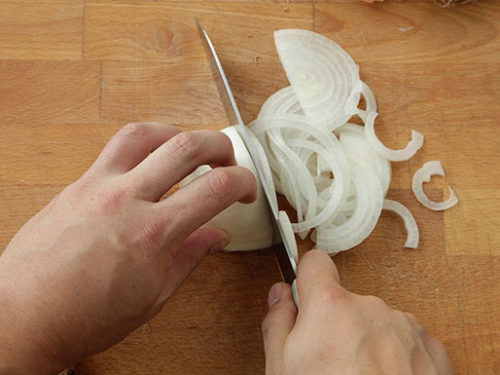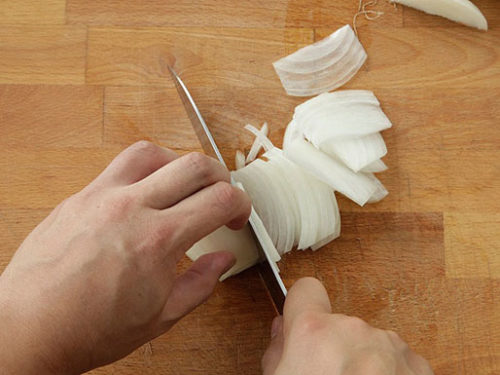2017-04-24
Margaret Atwood, the prophet of dystopia.
Margaret Atwood, the prophet of dystopia.
One of the most fundamental principles in fitness is progressive overload: gradually increasing workout stress over time, so that your body adapts positively to that increase. Perhaps that’s adding five pounds to your squat each time you lift to build strength, or lengthening successive runs to go from a mile to a marathon.
But while overload is easy on paper, it’s far more complicated in real life. Human bodies don’t adapt linearly in even the best of conditions, and progress is even more unpredictable once you factor in life stress, travel, lack of sleep, or a night of heavy drinking and too much dessert. Continuing to overload beyond what your body can keep up with leads to overtraining, which in turn causes illness and injuries, setting progress back.
So as you move forward in training, it’s useful to be able to monitor how well your body is adapting. While there are a number of approaches that work, one of the simplest and most empirically validated is tracking heart-rate variability (or HRV).
We tend to think of our heart as beating in a steady tick-tock. In reality, each beat varies a bit from the last. In fact, a healthy heart has a great deal of variability, whereas increasing regularity (as data from the Framingham study and others have consistently shown) drives increasing risk of heart disease.
Heart-rate variability results from the balance between the sympathetic and parasympathetic nervous systems. The sympathetic nervous system is like the gas in a car, revving our bodies up for increased output, whereas the parasympathetic is like the brakes, bringing us down into rest and relaxation.
When the sympathetic nervous system overwhelms the parasympathetic, your heart-rate variability decreases. And, similarly, when your sympathetic nervous system overwhelms the parasympathetic, you’re on the road to overtraining.
As a result, monitoring heart-rate variability is a great way to simultaneously monitor overtraining.
While, previously, measuring HRV required specialized equipment (whether an EKG or a chest-strapped heart-rate monitor), the brilliant folks behind the app HRV4Training recently developed and clinically validated an approach to measurement using just your smartphone.
The way it works is simple: each morning, right after you wake up, you hold your finger over the phone’s camera lens for one minute. From that, the app determines your HRV for the day, compares the number to your moving averages over the past seven days and two months, and kicks out a simple recommendation: something like “go ahead and train, but limit intensity,” or “if you planned intense training, go for it.”
As I admitted on Friday, I’ve sometimes been lax with daily HRV tracking. But I always regret it when I am. HRV provides a great window into how I’m adapting to the progressive overload of my workouts, and it’s been a powerful tool in helping to keep me healthy and injury-free, moving forward over the longer haul.
So download HRV4Training, and overload yourself, just the right amount.
Briefly stated, the Gell-Mann Amnesia effect is as follows. You open the newspaper to an article on some subject you know well. In Murray’s case, physics [Murray Gell-Mann is an American physicist who received the 1969 Nobel Prize in physics]. In mine, show business. You read the article and see the journalist has absolutely no understanding of either the facts or the issues. Often, the article is so wrong it actually presents the story backward—reversing cause and effect. I call these the “wet streets cause rain” stories. Paper’s full of them.
In any case, you read with exasperation or amusement the multiple errors in a story, and then turn the page to national or international affairs, and read as if the rest of the newspaper was somehow more accurate about Palestine than the baloney you just read. You turn the page, and forget what you know.
– Michael Crichton
Rebuilding the hospital of the future.
I admit it: I’m both lazy and forgetful.
So while I sometimes manage to track useful health markers (like, for example, heart-rate variability each morning with the excellent HRV4Training app, to monitor over-training), I also often end up going for days and weeks ignoring them completely.
That’s why I’m particularly enthused about any app that works regardless of whether my brain is engaged, like AutoSleep for Apple Watch and iPhone.
Unlike other Apple Watch sleep trackers, this one doesn’t require me to actively tell it when I go to sleep and wake up, yet it’s surprisingly accurate nonetheless. Even better, as I only wear my watch to bed some nights, it still works even when the watch is on the charger. Sure, those nights don’t include sleep quality (which the app derives from heart rate and restlessness data from the watch), but it still accurately clocks start and stop times from when I plug in and unlock my phone (something that, shamefully enough, tends to be my last and first actions of the day). And it even correctly subtracts time for early morning pee breaks, as I (like, I think, most people) briefly turn on the screen of my phone when I get up in the middle of the night to see what time it is.
If my trailing average sleep duration closes in on eight hours nightly, I’m well-poised to hit PRs; whereas, if I’m averaging under seven hours (or, worse, six), I’m lucky to get through my workouts at all (and, frankly, equally lucky to just get through the day). When I keep track of that number in my head, I find I overly weight the prior night (or two), and can barely remember how much I slept on any nights even a day or two further back. AutoSleep’s home page serves as a far more reliable reference.
Knowing when to push myself – and when not to – has been key to keeping me training productively and injury-free for long stretches. If you think it might be for you, too, download AutoSleep; it’s well worth the $2.99 cost.
When celebrity trumps science (and common sense): the unbearable wrongness of Gwyneth Paltrow.

Went with Jess this past weekend to hike the Great Stairs / Peanut Leap Cascade loop in Palisades Park, arguably the most challenging hike in New Jersey. It’s relatively short – only about three miles – but with very steep descents and ascents, and a whole lot of scrambling. Highly recommended.
Five or six years back, I was discussing cooking with Naval Ravikant, who observed that a surprising majority of the entrepreneurs he knew seemed to love to cook. I’d noticed the same thing, though it made a lot of sense to me: both are about creating something from scratch, then sharing it with others. But while a startup requires years of slow slogging, a meal is something you can put together, enjoy with others, and receive course-correcting feedback on within the span of a single evening. Cooking fills your evening with a sense of success, of completion, that’s far more elusive in a company-building day job.
In the years since, I’ve watched the habits of chef-ing entrepreneurs, and it’s clear most of them bring the same science-loving nerdiness, and the same analytical approach, to both pursuits. Which is why so many of them also seem to be fans of Serious Eats, where Cook’s Illustrated alum J. Kenji López-Alt perfects recipes with a modern foodie spin on America’s Test Kitchen rigor.
Jess bought me a copy of López-Alt’s excellent The Food Lab earlier this year, and (though it’s a bit of a doorstop at 900+ pages) I’ve since read it cover to cover. Among the many takeaways was a small and surprising point I thought about this morning, as I was making salads to pack for lunch: how you slice an onion has a significant impact on how those slices taste.
You can read a full discussion of the difference here, but in summary:
Most people slice onions by cutting them in half, turning the stem to the right or left side, then slicing into half moons, like so:

The problem is, that ruptures a lot of cells in the onion, releasing lachrymators, the chemical compounds that make your eyes water and that sometimes give raw onions an off-puttingly overpowering taste.
To minimize that, simply rotate the onion ninety degrees, and instead slice it pole-to-pole, like this:

You can test this side-by-side, cutting the two halves of an onion different ways. Even better, store the two batches in separate containers for ten minutes, then open and sniff them. As López-Alt puts it, “there's no doubt that the orbitally sliced onion is stronger, giving off a powerful stench of White Castle dumpsters and bad dates.” I’ve tried it myself, and he’s most certainly right.
So, if nothing else, start slicing your onion the better way. But also consider buying and reading The Food Lab, so you can put similar insights to work across the board. If you’re a results-minded home (or even pro) chef, it’s definitely worth the time.